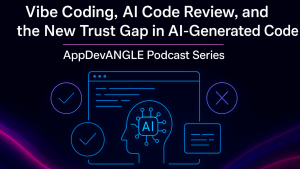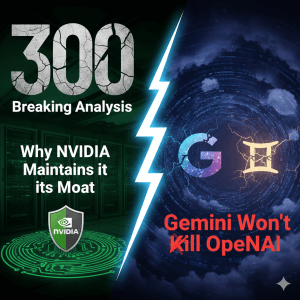AI is only as powerful as the data it can retrieve. But for most enterprises, that remains a fundamental constraint. According to theCUBE Research, over 65% of organizations deploying AI workloads in production cite unstructured data search and retrieval as a top bottleneck for performance and scalability. And it’s no surprise, unstructured data accounts for more than 80% of enterprise data, yet remains largely inaccessible to real-time applications.
The underlying issue isn’t infrastructure. It’s semantic understanding.
This week on AppDevANGLE, I spoke with Manuel Meyer, head of growth at Qdrant, to explore how vector search is becoming a foundational capability for AI-native systems. From recommendation engines and chatbots to anomaly detection and edge deployments, Qdrant’s vector-native architecture is helping organizations move from storage to insight and doing so across multimodal workloads.
“What we’re trying to do is capture the semantic meaning across video, text, and documents—and compare them meaningfully. That’s what traditional keyword search just couldn’t do.” — Manuel Meyer, Qdrant
The Case for Vector-Native Design
Enterprises have long relied on keyword search, filters, and faceted navigation to parse through massive amounts of unstructured data. However, as AI-powered applications become the new interface, whether in RAG pipelines, assistants, or real-time recommendation engines, the limits of traditional indexing become clear.
Vector search flips the model: instead of parsing literal strings, it encodes semantic meaning into dense vector embeddings, allowing applications to compare meaning across modalities like video, audio, text, and images.
“Vectors are not the source of truth. They’re a retrieval format. But they unlock a new level of comparison across data types and that’s essential for modern AI workloads,” said Manuel.
To support this, Qdrant was purpose-built as a vector-native database. Unlike general-purpose databases that bolt on vector features or traditional search engines with limited semantic scope, Qdrant’s architecture was designed from the ground up to handle high-dimensional, high-volume, and high-velocity data efficiently.
Why This Matters for Real-Time, Production-Grade AI
The performance requirements for AI workloads go beyond accuracy. They include low latency, scalability, and deployment flexibility. Whether surfacing context for a chatbot, recommending personalized content, or identifying anomalies, real-time interaction is now table stakes.
Qdrant’s customers are already deploying vector search at scale:
- TripAdvisor embeds hotel photos and reviews to power AI trip planning.
- Deutsche Telekom’s “Ask Magenta” uses vector search to support 2 million live interactions.
- HubSpot integrates Qdrant into its Breeze AI assistant for CRM data access in real time.
These applications require semantic precision, fast inference, and edge-to-cloud deployability. And as Manuel noted, each use case requires a different performance trade-off: some prioritize speed, others prioritize accuracy, and still others aim to reduce memory cost.
“There’s no one-size-fits-all for vector search. You have to optimize for the triangle: speed, accuracy, and memory. You typically get to pick two.”
Infrastructure Flexibility and the Rise of Hybrid AI
As vector search becomes embedded deeper into AI systems, its deployment model matters. Enterprises increasingly need support for hybrid and edge environments, whether due to data residency requirements, latency considerations, or infrastructure reuse.
Qdrant’s architecture supports:
- Fully managed cloud deployments
- Self-hosted open source options
- Hybrid cloud deployments with decoupled control and data planes
- Air-gapped private cloud for strict compliance environments
- Lightweight edge deployment via a single-container footprint
“We’re seeing demand for vector search that runs in the customer’s environment where data stays local but control remains managed,” said Manuel. “That hybrid model is key.”
This is especially relevant as organizations scale out RAG systems and agents that require fast, local access to high-value unstructured data without compromising on performance or governance.
Analyst Take
The unstructured data bottleneck is real and growing. As AI use cases expand beyond experimentation and into critical business systems, retrieving the right data at the right time becomes not just a performance question, but a business differentiator.
What makes Qdrant stand out is its clear focus on vector-native architecture: not as an add-on, but as a core capability designed for the AI era. From performance tuning across modalities to deployment flexibility at the edge, Qdrant is addressing the friction that holds most AI systems back.
For any organization evaluating vector databases as part of their AI stack, the key questions are:
- Can it handle real-time multimodal data at scale?
- Can it be optimized for your performance and cost requirements?
- Can it be deployed where your data lives: cloud, hybrid, or edge?
If the answer to all three is yes, then you’re no longer building for search, you’re building for AI.
Learn More
To try Qdrant or learn more about vector-native design, visit qdrant.tech, or explore their documentation and active community on Discord.
To hear our full conversation with Manuel, watch the latest AppDevANGLE episode here.
For more insights on AI infrastructure, developer platforms, and application modernization, visit thecuberesearch.com, or reach out to me at pauln@siliconangle.com.



